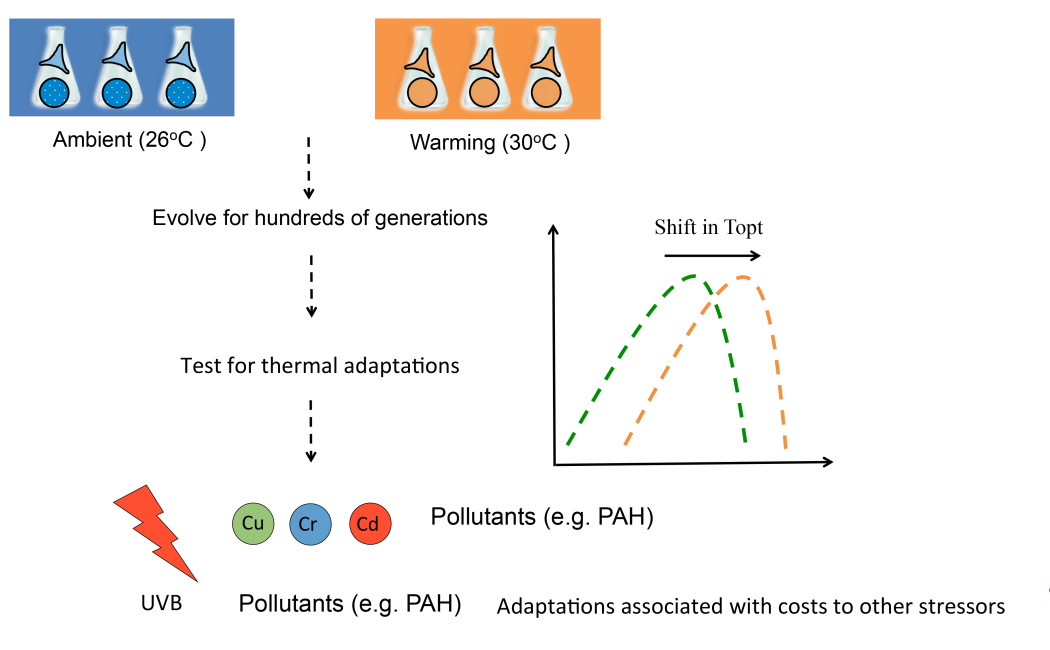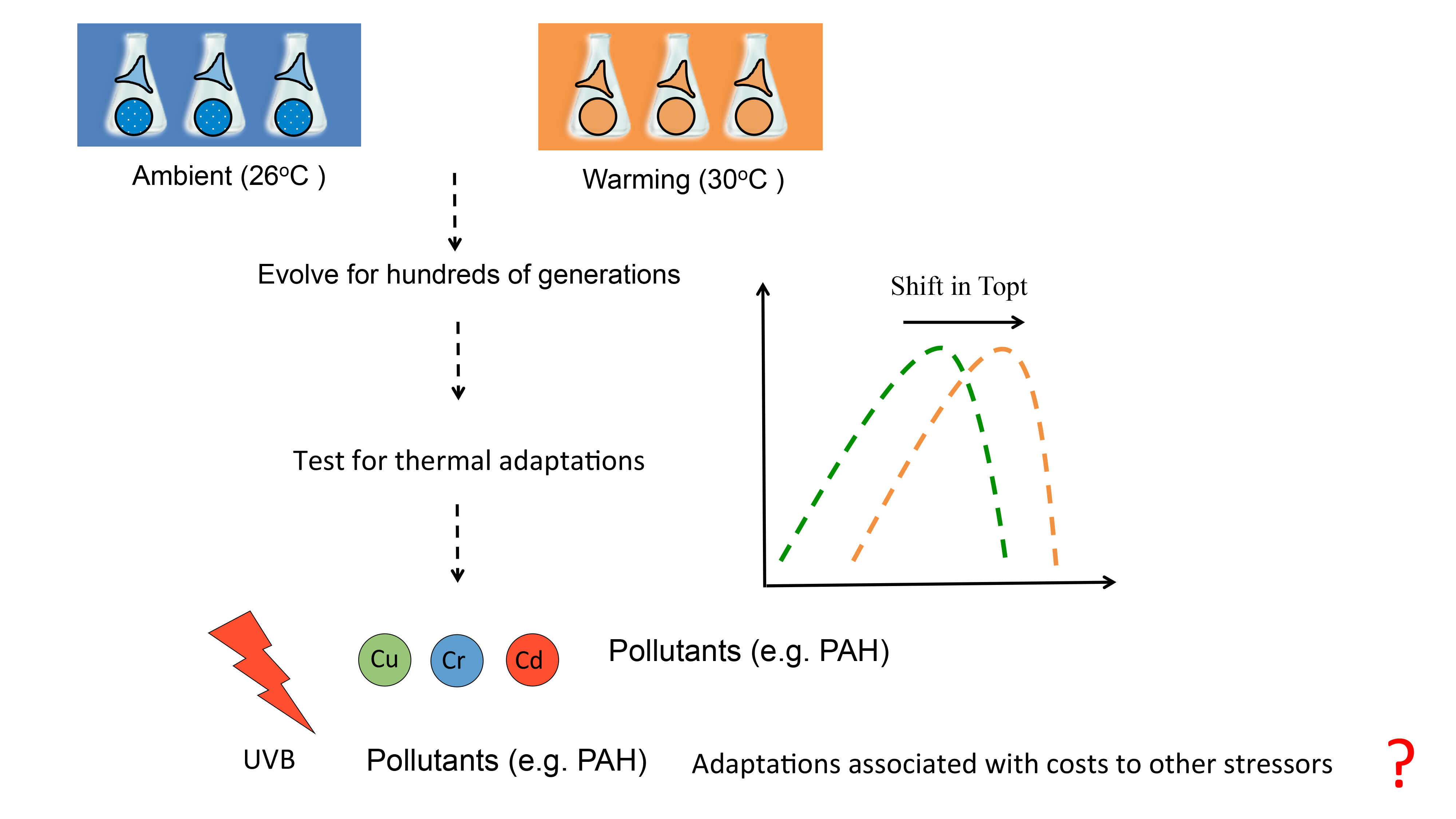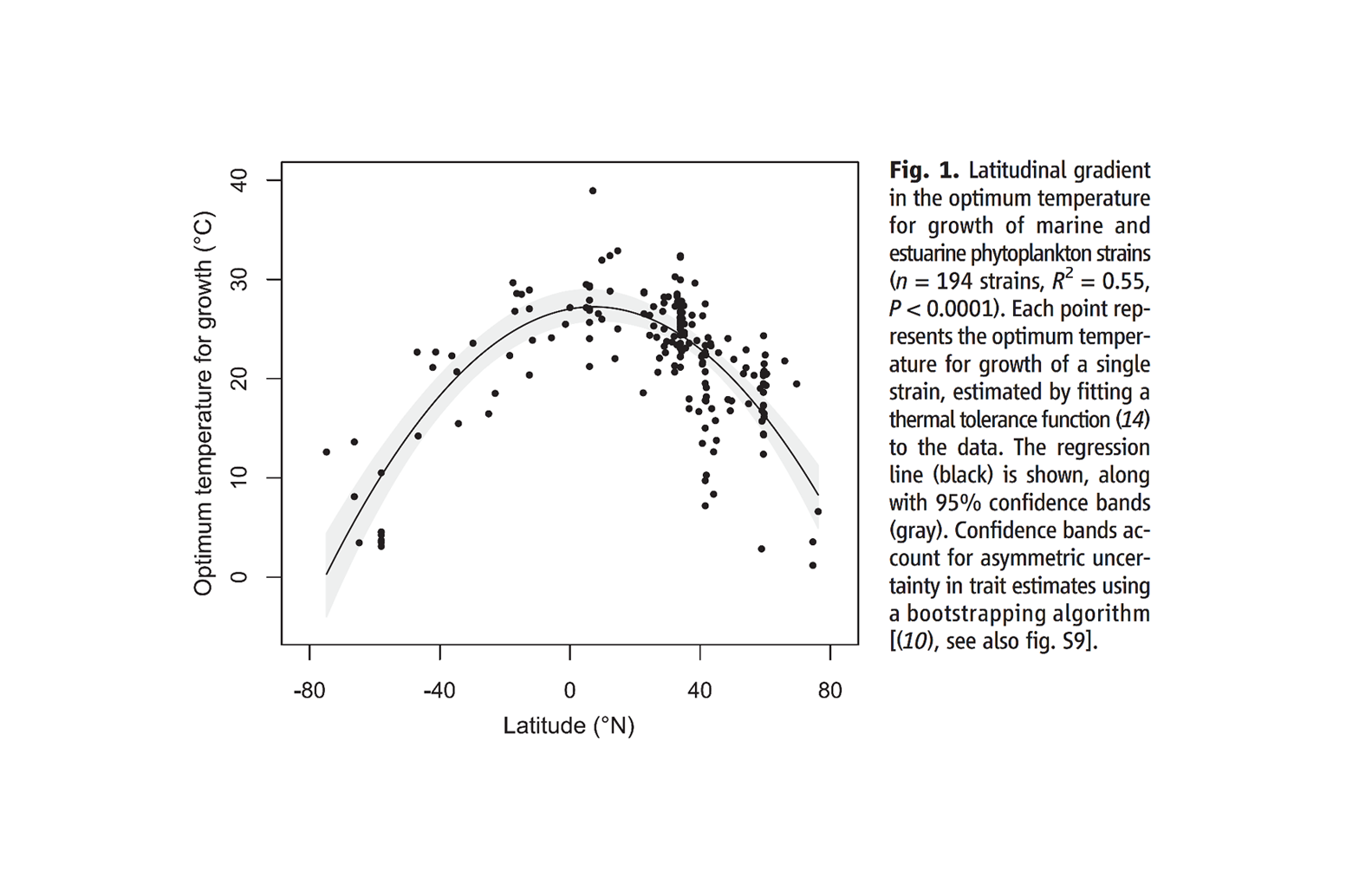
We are exploring thermal adaptations and thermal limits of phytoplankton from the Red Sea. To do so, we employ both long-term and short-term experimentation.
For adaptation studies, we grow phytoplankton species semi-continuously under ambient (26 oC) and warming (30 oC) conditions for hundreds of generations. After the long-term selections >8months, experimental evolution approach will be applied to test whether they could adapt to warming conditions. Adapted phytoplankton species of different taxonomic groups in different temperature regimes will also be exposed to different levels of other stressors e.g. UVB, pollutants, heavymetals to test whether the adaptation forced by ocean warming will alter their resistance to other stressors.
To test the thermal limits of phytoplankton, growth responses are measured across a wide temperature range (24 – 38 °C) using flow cytometry and microscopy in short-term experiments.
Together, our studies improve our understanding of how Red Sea phytoplankton may evolve and persist in a warming ocean, and provide us new insights into phytoplankton community shifts under climate change scenarios.


Reference: Thomas, Mridul K., et al. "A global pattern of thermal adaptation in marine phytoplankton." Science 338.6110 : 1085-1088.